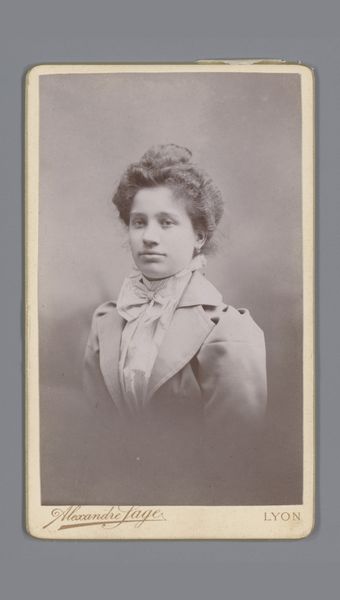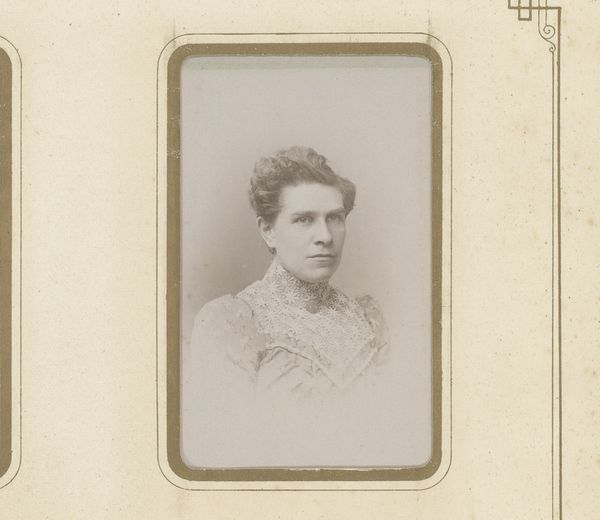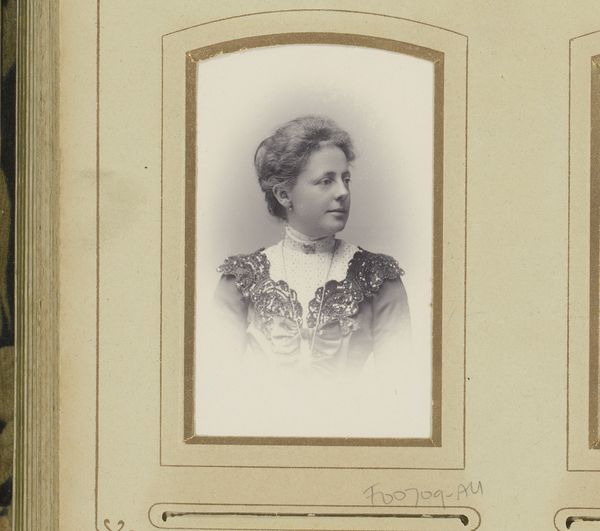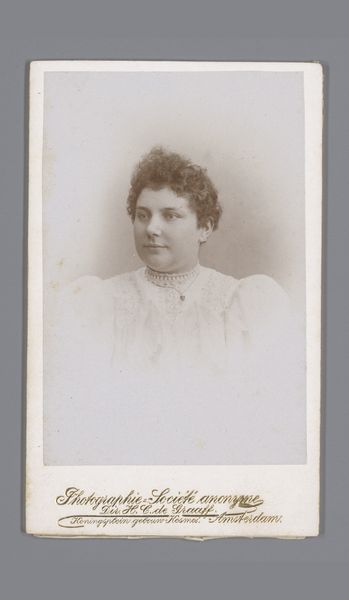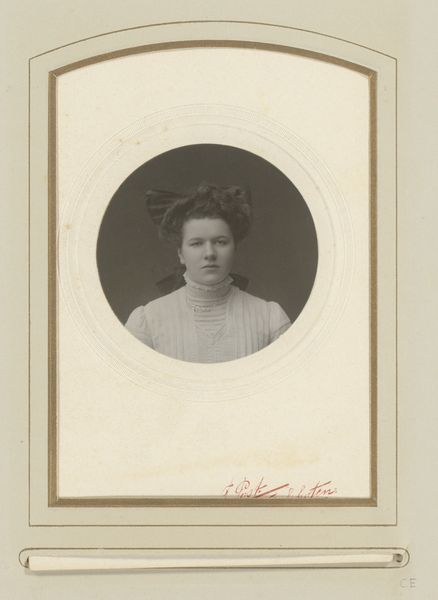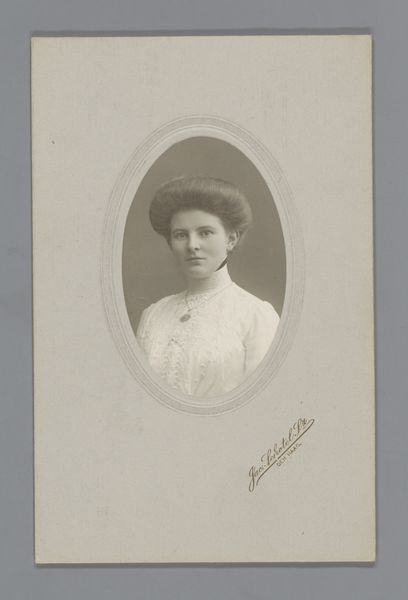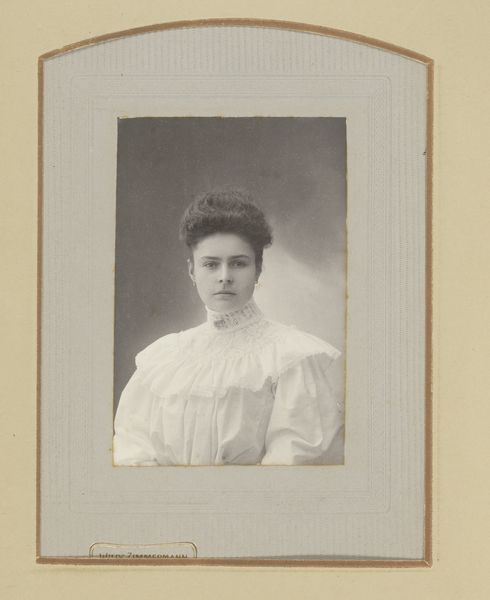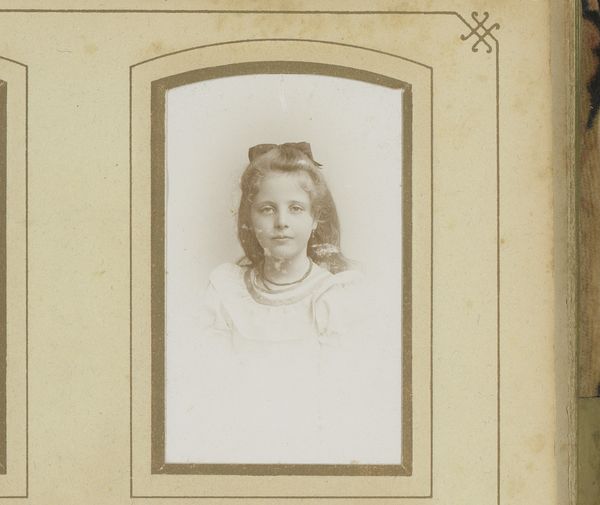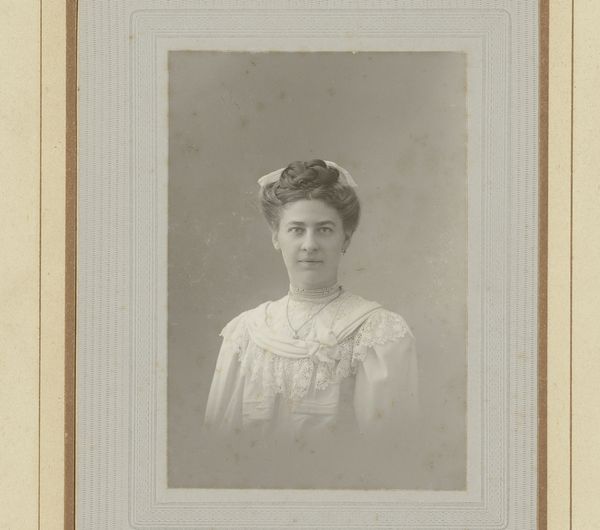
photography, gelatin-silver-print
#
portrait
#
photography
#
gelatin-silver-print
Dimensions: height 84 mm, width 50 mm
Copyright: Rijks Museum: Open Domain
Curator: Editor: So, here we have "Portrait of a Young Woman," a gelatin silver print from somewhere between 1870 and 1890 by Francis de Jongh. I'm struck by the formal pose and the crispness of the image despite its age. What aspects jump out at you? Curator: Considering the materials – the gelatin silver print – it's crucial to understand the socio-economic context. Photography, during that period, transformed from a luxury to something more accessible due to industrial advancements. How does this impact our view of the subject and her portrayal? Editor: That's interesting! So, you're saying mass production changes our understanding. Does it suggest the subject belonged to a rising middle class with increased access to such technologies, moving away from hand-painted portraiture? Curator: Precisely. Furthermore, we should question the labor involved. Who prepared the photographic materials? Who operated the camera? Was this a product of leisure or of industry, both for the subject and those producing the image? Editor: I never thought about the labor involved in photography. It makes me wonder about the young woman's dress as well – the lace looks hand-made, indicative of skill and maybe time, which itself signifies wealth. Curator: Absolutely. The tactile nature of the lace against the smooth photographic surface presents a stark material contrast. The interplay between industry and craft is vital. Is this photograph celebrating burgeoning consumer culture or still holding onto older values of artisanal production? Editor: Thinking about it now, I wonder how much agency she really had in her own depiction? Curator: A critical question. These photographic materials, and the processes, were laden with social meaning. We need to analyze these components, and their manufacture, to really grasp the work's power and cultural value. Editor: This really changes how I look at old photographs. I always considered the aesthetic aspect, but rarely thought about the making or wider industry, or the photographer’s choices. Curator: Precisely. It all comes back to materials, production, and how art reflects– and is shaped by – social forces.
Comments
No comments
Be the first to comment and join the conversation on the ultimate creative platform.
